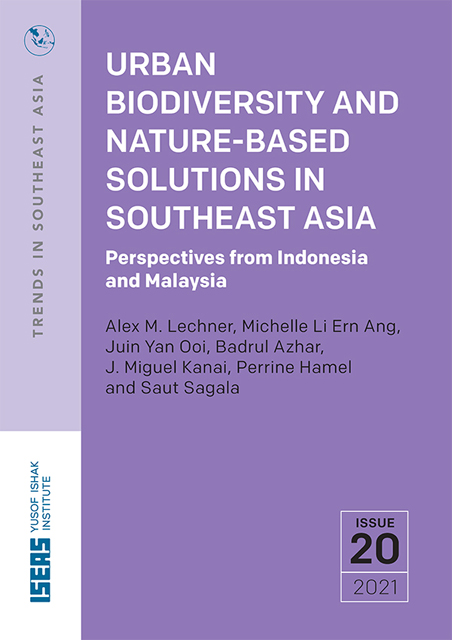 Urban Biodiversity and Nature-Based Solutions in Southeast Asia
Urban Biodiversity and Nature-Based Solutions in Southeast Asia Published online by Cambridge University Press: 01 September 2023
INTRODUCTION
More people are living in cities than ever before with around 55 per cent of the world’s population in cities as of 2018, and this is expected to grow to 68 per cent by 2050 (UN DESA 2018). Much of this rapid urbanization is concentrated in the Global South, such as in low- and middle-income countries, which have all experienced significant increases in population and rural to urban migration (Hajer et al. 2020; UN DESA 2018). By 2050, there is expected to be another 2.5 billion people living in urban areas with approximately 90 per cent of this increase taking place in Asia and Africa (UN DESA 2018). Of the urban infrastructure required in 2050, around 40 per cent has yet to be built (Hajer et al. 2020). In the coming decades, Southeast Asia is expected to experience one of the greatest increases in population and urbanization in the world.
Countries in Southeast Asia are rapidly urbanizing from their historically rural population base, with each country at different points in their urbanization development pathway, from Singapore with 100 per cent urbanization to Cambodia with 24.7 per cent urbanization in 2021 (UN DESA 2018). Around 66 per cent of the population of Southeast Asia is expected to reside in urban areas in 2050, compared to an estimated 51 per cent in 2021 and 16 per cent in 1950 (Figure 1a). Of the Southeast Asian nations, Malaysia is one of the most urbanized of the low- and middle-income countries (Lechner et al. 2020a), with an estimated 78 per cent of its population in cities (Figure 1a). Meanwhile, Indonesia, which is a lower-middle-income country (World Bank 2021), has the largest population in Southeast Asia at 271 million (BPS 2021), with an estimated 57 per cent of its population in cities (Figure 1a). Indonesia is also home to the megacity (i.e., city with over 10 million) of Jakarta with a population in Daerah Khusus Ibukota (Capital Special Region) of 11 million (BPS 2021) and upwards of 30 million in the Jakarta metropolitan area (Jabodetabekjur) (BPS 2021). The growth of megacities such as Bangkok and Manila, and major cities approaching megacity size, such as Greater Kuala Lumpur and Ho Chi Minh, is triggering a ripple effect, promoting growth in nearby cities and thereby concentrating urbanization in selected regions (Suzuki 2019).
To save this book to your Kindle, first ensure [email protected] is added to your Approved Personal Document E-mail List under your Personal Document Settings on the Manage Your Content and Devices page of your Amazon account. Then enter the ‘name’ part of your Kindle email address below. Find out more about saving to your Kindle.
Note you can select to save to either the @free.kindle.com or @kindle.com variations. ‘@free.kindle.com’ emails are free but can only be saved to your device when it is connected to wi-fi. ‘@kindle.com’ emails can be delivered even when you are not connected to wi-fi, but note that service fees apply.
Find out more about the Kindle Personal Document Service.
To save content items to your account, please confirm that you agree to abide by our usage policies. If this is the first time you use this feature, you will be asked to authorise Cambridge Core to connect with your account. Find out more about saving content to Dropbox.
To save content items to your account, please confirm that you agree to abide by our usage policies. If this is the first time you use this feature, you will be asked to authorise Cambridge Core to connect with your account. Find out more about saving content to Google Drive.